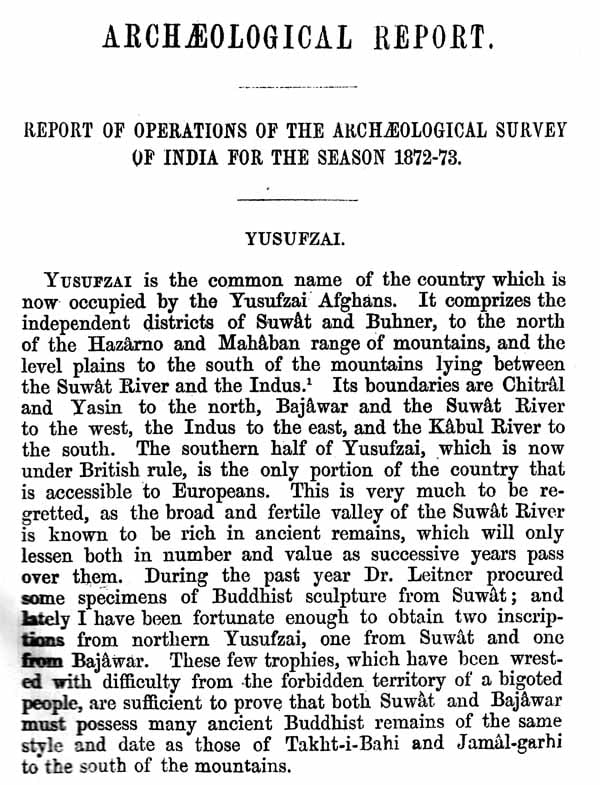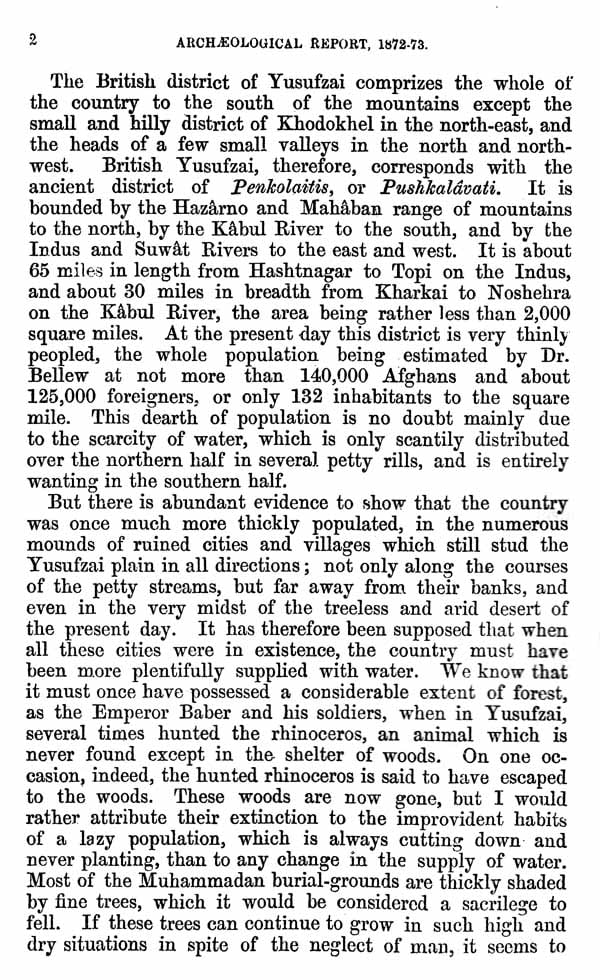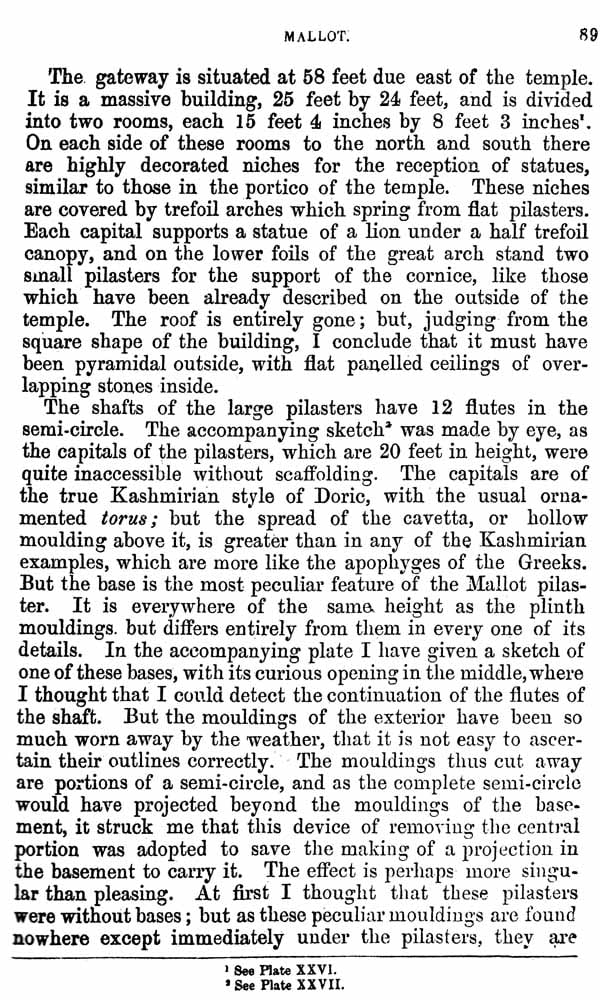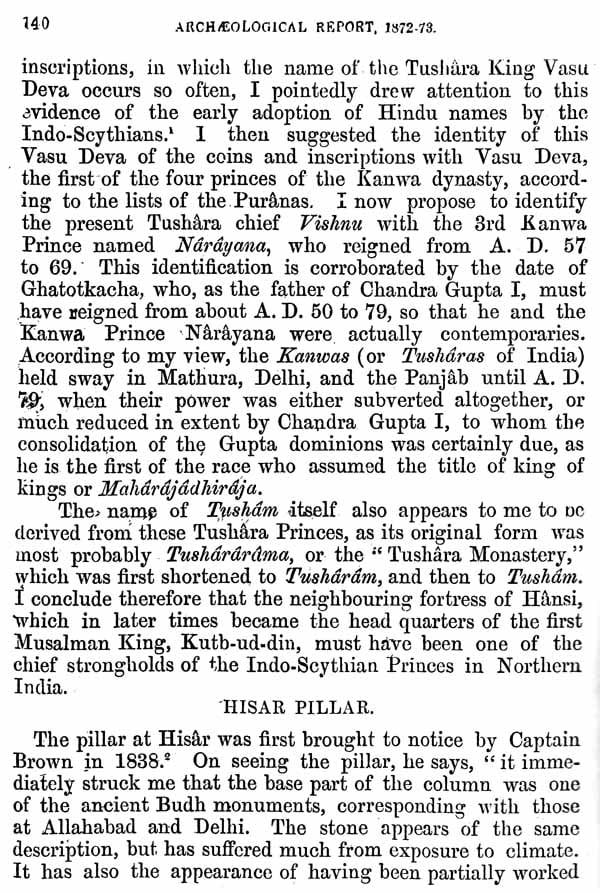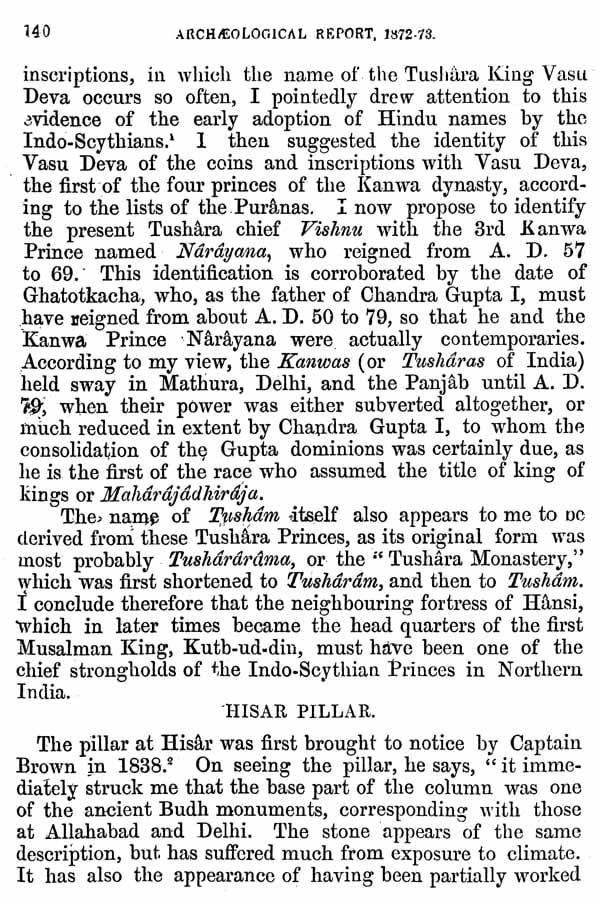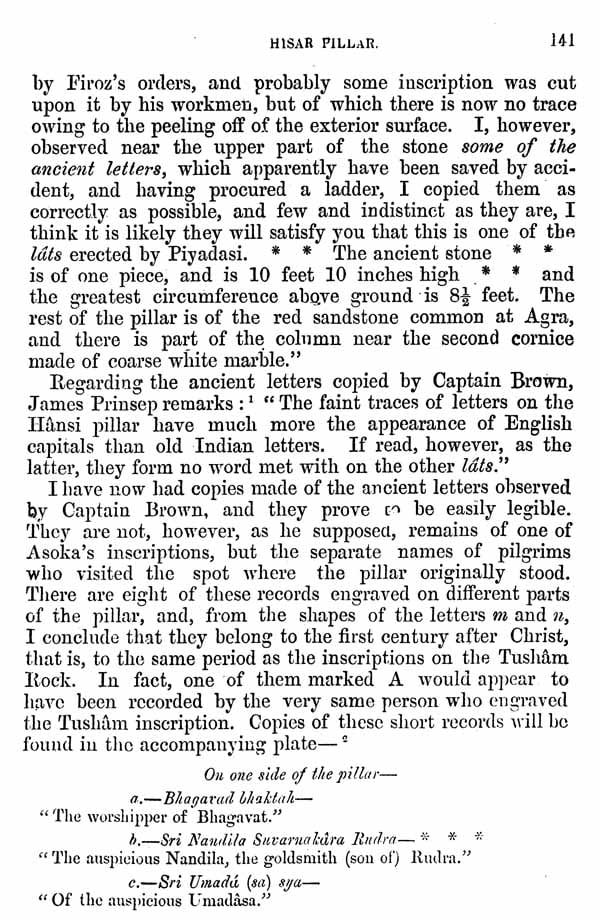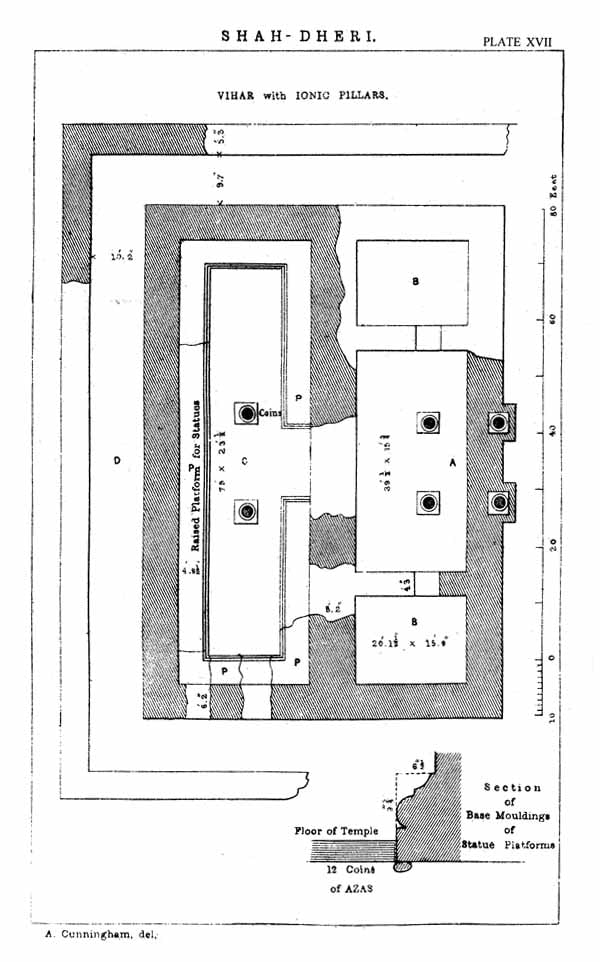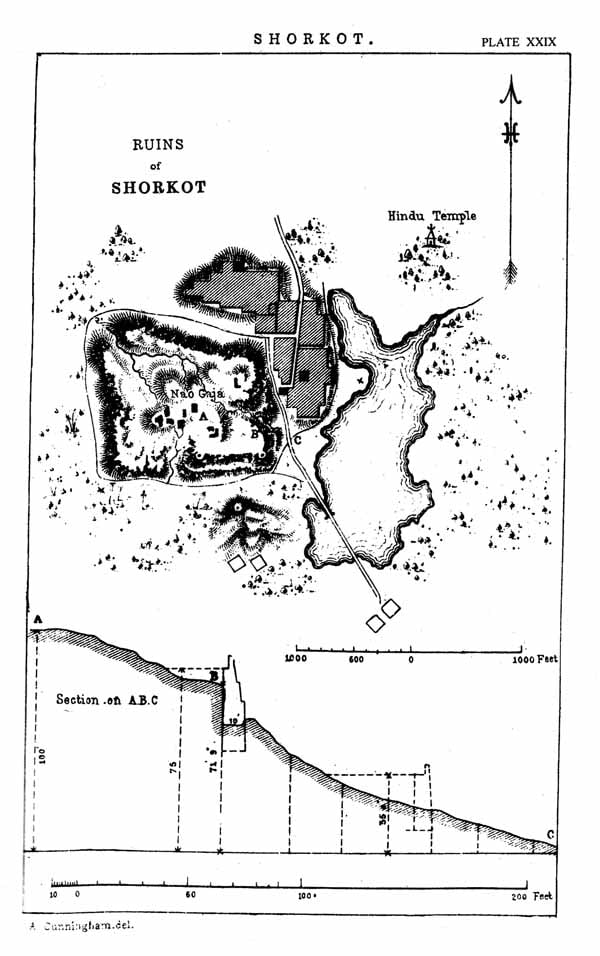
Archaeological Survey of India Report For The Year 1872-73 (Vol-V and An Old and Rare Book)
Book Specification
| Item Code: | NAX428 |
| Author: | A. Cunningham |
| Publisher: | ARCHAEOLOGICAL SURVEY OF INDIA |
| Language: | English |
| Edition: | 2000 |
| Pages: | 254 (49 B/W Illustrations) |
| Cover: | HARDCOVER |
| Other Details | 9.50 X 6.50 inch |
| Weight | 830 gm |
Book Description
THE present volume contains the results of a tour through the Punjab during the cold season of 1872-73. The most noteworthy results of this tour are the acquisition of a new copy of the rock inscription of Asoka at Shahbaz garhi, and of an extensive and very valuable collection of Buddhist sculptures of the Indo-Scythian period. A small collection of similar sculptures which was taken to England by Dr. Leitner has not only excited much attention, but has caused some controversy both as to the age when the sculptures were executed, and as to the alleged traces of Grecian art which Dr. Leitner believes them to possess. On the latter point I must say that I agree entirely with Dr. Leitner. There are some of these sculptures which are no doubt rather coarsely, and others perhaps even clumsily, executed ; but the majority of them exhibit a boldness of design and a freedom of execution which no Eastern artist has ever yet shown. I do not of course attribute them to actual Greek sculptors, but I firmly believe that they owe all their beauty as well as all their truth of grouping to the teachings of Greek artists, whose precepts were still understood and conscientiously followed long after the Greek dominion in North-Western India had passed away. One of the most characteristic marks which distinguishes these Indo-Grecian sculptures from all other Indian examples which I have yet seen, is that whenever a face is partly turned to one side, that side is invariably cut away to nearly flatness so as to give a deeper shadow to it, and a greater prominence to the unaverted side. Whether this was a practice of any of the Greek sculptors I am unable to say ; but I can vouch that it was not an Indian practice.
That I am fully justified in holding this belief I need only point to the fine specimens of Indo-Corinthian pillars which I have given with the appendix of the present volume. Of the Greek origin of their magnificent acanthus leaf capitals there can be no doubt. But if the architecture be Hellenic, it is only natural that we should look for some traces at least of the same influence in the sculptures which stood beside these Corinthian. pillars.
As to the age of these specimens of Indo-Grecian architecture and sculpture, my belief is that the great mass of them belong to the most flourishing period of Indo-Scythian rule under Kanishka and his immediate successors. or from 40 B. C. to about 100 A. D. The beauty of some specimens is so great that I should have been glad to have assigned them to a still earlier period. A few specimens, such as the figure of Athene with spear and helmet, now in the Lahore Museum, may date as early as 80 B. C. during the reign of Azas, on whose coins a similar figure of the goddess is found. But there is no trace of any Greek writing, and as nearly all of the subjects of the sculptures are illustrative of the Buddhist religion, I think that they must be later than the period of Greek rule in the Kabul valley, which ended about B. C. 120.
One argument that has been brought forward against the early date which I have assigned to these sculptures, is the fact that no images of Buddha are found amongst the sculptures of the Sanchi Stupa, which dates as late as 100 A. D. But though I believe this to be strictly true of Central India, yet it is absolutely certain that images of Buddha were known in the Kabul valley and Punjab before the Christian era, as the coins of Kanishka present us with two unmistakeable figures of Buddha-one as the teacher seated, the other as the teacher standing,-in each case with the right band upraised as if in the act of speaking. The Greek legend which accompanies these figures has not been satisfactorily deciphered ; but as the one portion of it which is clear on all the coins reads Saka m x x, there can be no doubt that the figure is that of Sakya Muni. It is equally certain that images of Buddha had been introduced into Northern India about the same period,, as several of them have been found at Mathura with inscriptions of Kanishka and his ,successors Huvishka and Vasu. Deva. The colossal statue of Buddha which I dug up in the Kosamba Kuti temple at Sravasti is, I 'believe, of a somewhat earlier date, as the syllable sya, which occurs in it more than once, is of an older form than that of the Indo-Scythian records.
**Contents and Sample Pages**
